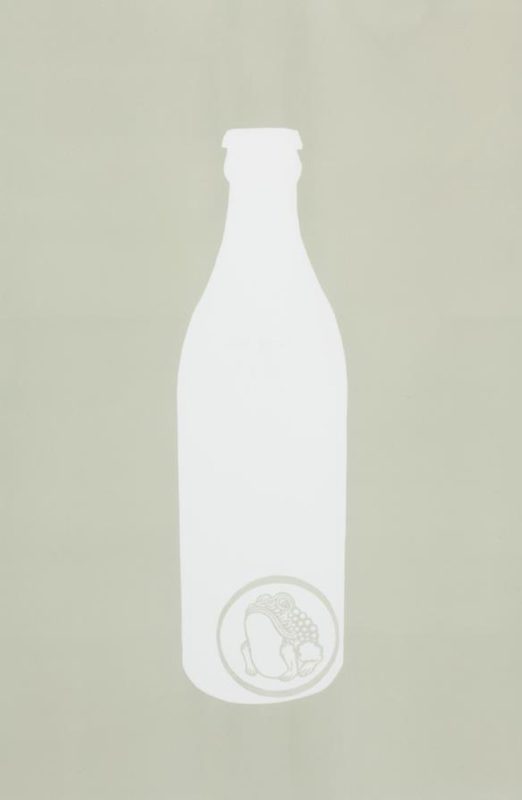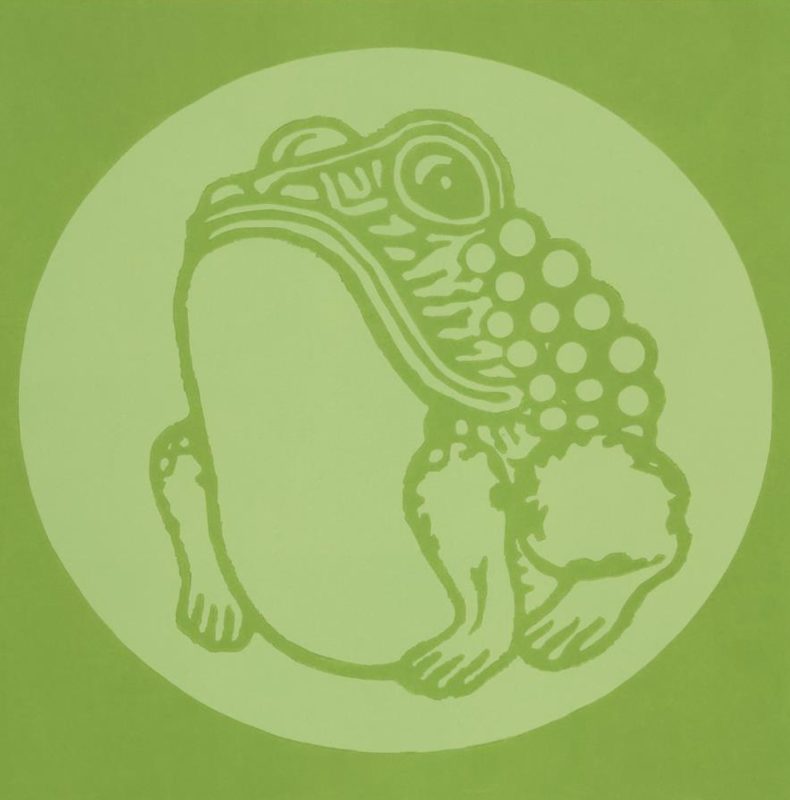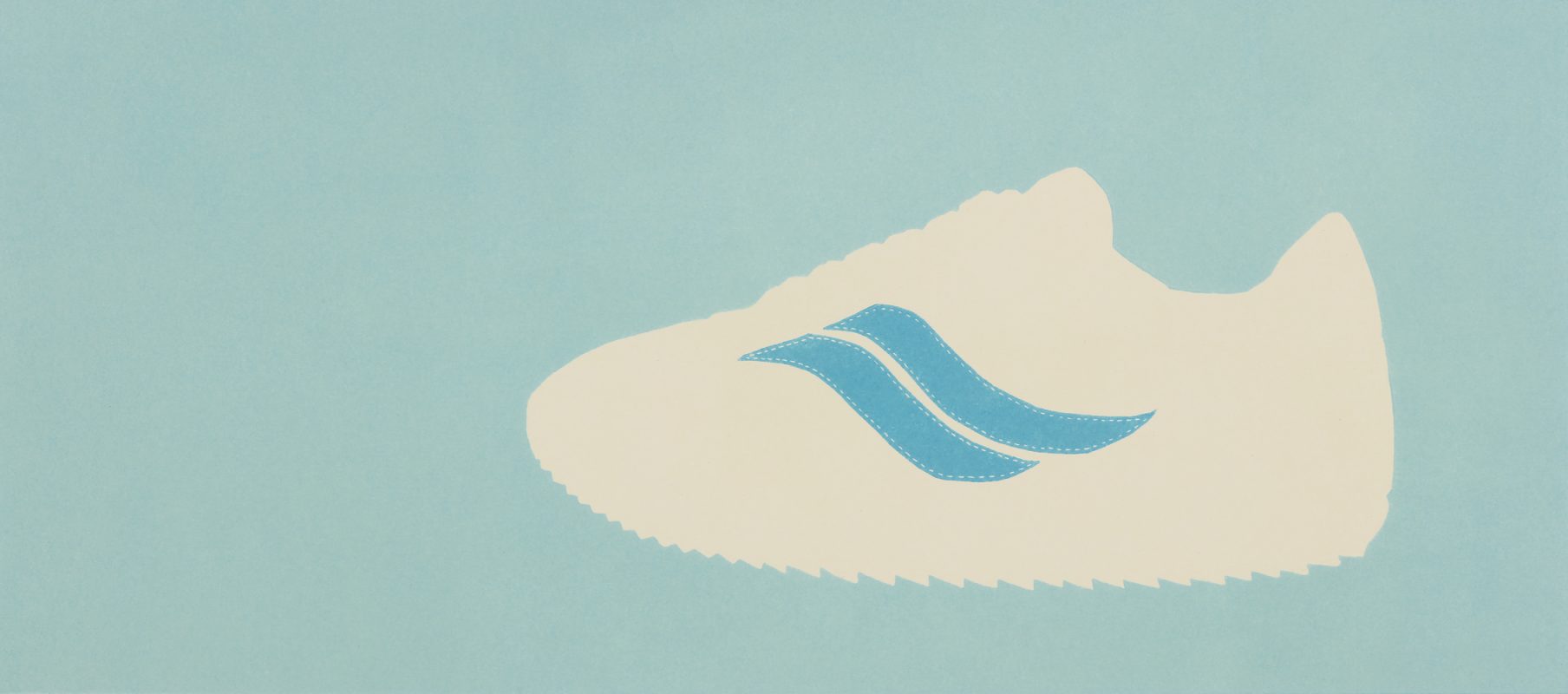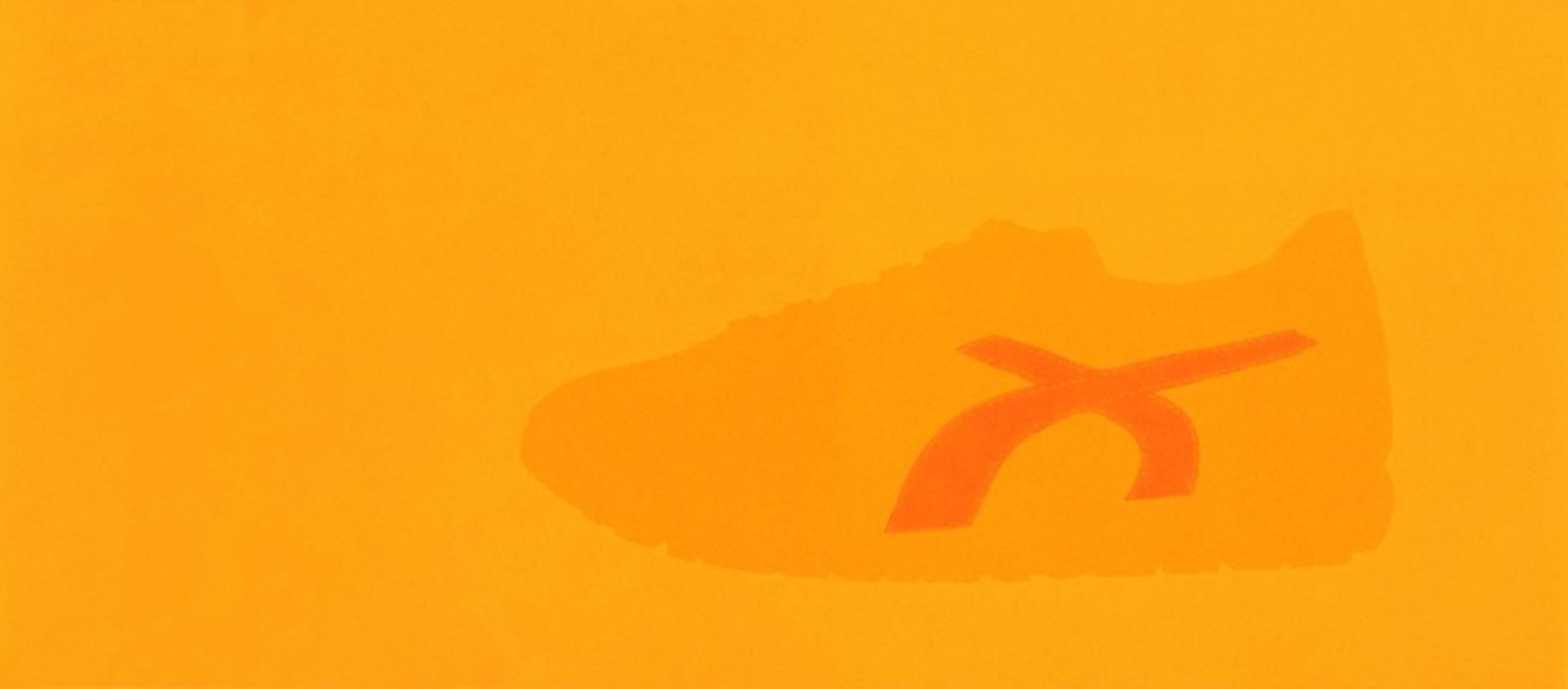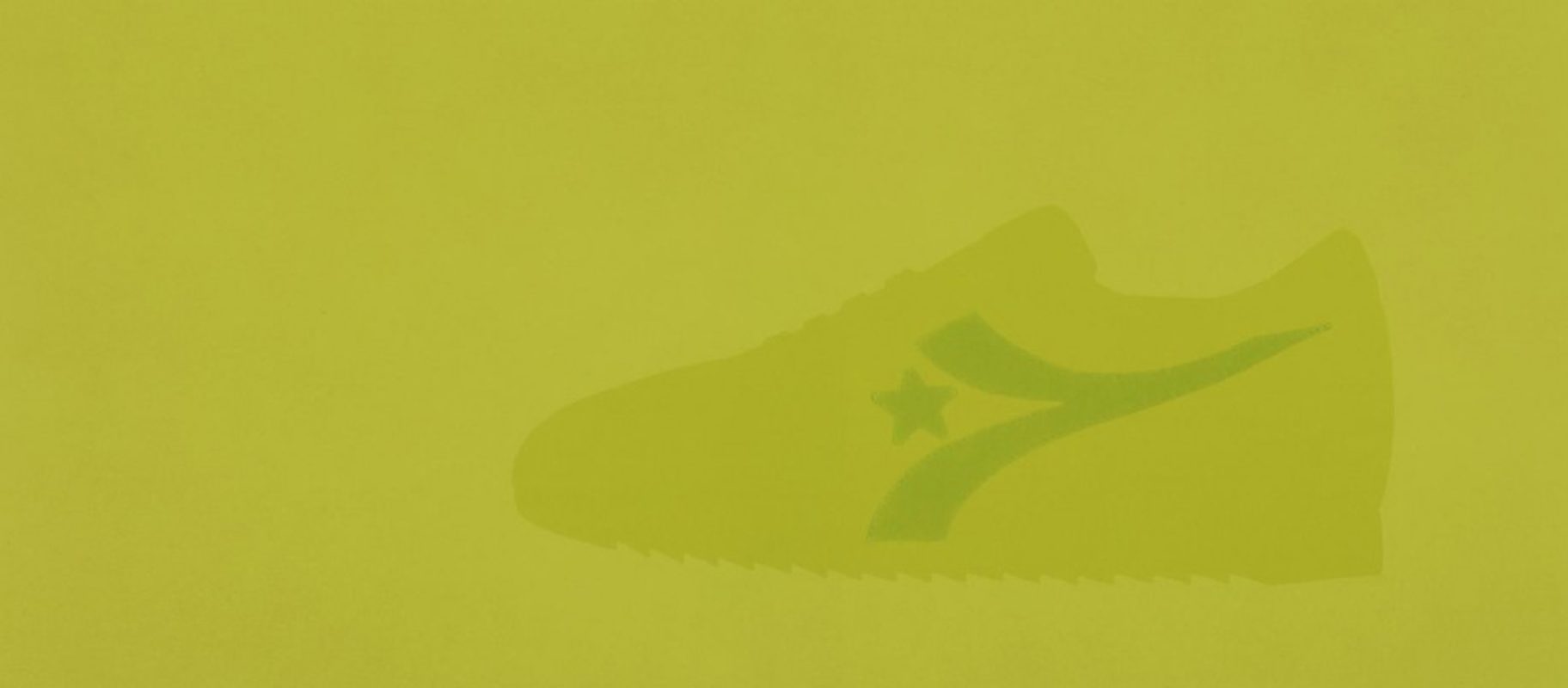Remember
Ham Changhyun
추억의 운동화 브랜드, 그 기호들
모든 기호는 의미를 생산한다. 자본주의는 그 기호가 실체를 대신해서 현실을 장악한다. 이제 기호가 모든 것의 얼굴이 되었다. 추상적인 기호가 실제보다 더 위력적인 존재가 된 것이다. 기호가 진실이자 진정한 존재가 되었으니 그 대표적인 예는 단연 화폐다. 오늘날 우리를 둘러싼 모든 사물들은 저마다 기호를 통해 자신의 가치를 방증한다.
우리는 이제 사물을 실용적 가치를 위해서가 아니라 그 기호가 뿜어내는 모종의 아우라를 소유하기 위해 소비한다. 그것은 손에 잡히지 않는 무지하게 모호하고 애매한 추상화다. 실체가 없는 다만 기호 뿐인데도 그것이 압도적인 힘으로, 권력으로, 미적인 존재로 사람들의 신경과 감각, 신체를 장악한다. 그리고 특정 기호는 이른바 유행과 취향의 순환 속에서 급박하게 흘러 다닌다. 하여간 자본주의는 새로운 기호를 빠르게 소비시키고 대체하기를 거듭한다. 그래야 이 체제가 작동한다. 그러나 기호는 힘이 세다.
함창현은 한 개의 운동화를 단독으로, 목판화로 찍어 놓았다. 제한된 몇 가지 색만으로 단출하게 정리된 화면에는 운동화의 측면을 보여주는 실루엣이 정물처럼 자리하고 있을 뿐이다. 특정 운동화를 선전하고 있는 포스터나 광고사진을 보는 듯도 하다.
침묵으로 절여진 화면에는 (당연한 얘기지만) 단색으로 마감된 운동화가 놓여있고 그 표면에는 특정 운동화 브랜드를 알리는 기호가 선명하게, 그러나 너무 적막하고 심플하게 자리하고 있을 뿐이다. 익숙하면서도 낯선 기호들이다.
분명 어디선가 보았지만 지금은 찾아보기 힘든 브랜드들이다. 아, 최근에 인기리에 반영되었던 텔레비전 프로그램인 ‘응답하라 1988’에서 등장인물들이 신고 나왔던 운동화가 아닌가!
까발로, 타이거, 페가수스 등의 운동화 브랜드가 바로 그것이다. 1980년대에 주식회사 삼화나 태화에서 나온 추억의 운동화들이다.
당시에는 너무나 매혹적인 서구의 나이키 운동화가 상륙했지만 그런 고가의 운동화를 구입해서 신을 수 있는 이들은, 특히 학생들의 경우는 극소수였을 것이다. 이들은 대신 외국 운동화를 흉내 낸 다소 짝퉁의 내음이 짙게 풍기는 국내산 운동화를 소비했다. 까발로의 로고(기호)는 아식스를 닮았고 타이거는 다분히 아디다스와 유사하며 페가수스는 분명 나이키에서 연유한 로고를 자신들 스스로가 수치심 없이, 소박하게 드러내고 있다. 비록 그 기호는 차이가 나지만 가성비 좋고 예쁜 브랜드임에 분명 틀림없었다. 그럼에도 나이키를 신은 친구와 까발로나 타이거, 페가수스를 신은 친구가 함께한다면 그로인한 기호의 차이가 자아내는 모종의 심리적 결락감과 빈부의 차이를 감당해야하는 비애감 등은 상당했을 것이다.
아마도 한국 사회는 나이키의 등장으로부터 자본주의사회에서 기호의 차이가 과연 무엇인가 하는 점을 똑똑히 학습하기 시작했다. 기호의 차이는 서열화 되어서 나이키 다음으로 프로스펙스 그리고 그 다음으로 타이거, 까발로, 페가수스가 자리했다. 그 맨 밑으로는 나이스가 수줍게 놓여있었다. 당시 학생들은 자신의 운동화에 스스로 나이키 로고, 그 기호를 직접 그려 넣기도 했다.
함창현은 이제 우리 주변에서 사라져버린 추억의 운동화, 국내산 운동화의 로고, 그 기호만을 차분하게 보여준다. 그것은 아주 분명하게 떠오르지도 않고 그렇다고 마냥 희미하지도 않다. 추억의 운동화 브랜드를 다시 되돌아보면서 우리 사회에서 과연 사물의 피부를 덮고 있는 기호란 무엇인가를 질문하게 된다. 기호는 힘이 세다!
■ 박영택 (경기대 교수, 미술평론가)
⠀⠀⠀
⠀⠀⠀
⠀
Hahm Chang Hyun – Sneaker Brands from Our Memories and Their Signs
Every sign has some sort of meaning and takes hold of the reality of a capitalistic society in place of substance. Signs have now become the faces of everything. That is to say, abstract signs have become more influential than the real things they represent. They are truthful, veritable objects: money is a typical example. Every object in our surroundings demonstrates its own value through signs.
We consume something not to make use of its practical value but to possess its aura which springs forth from its logo. It is an uncaught, awfully equivocal, and ambiguous abstract painting. It seizes control of people’s nerves, senses, and bodies with an overwhelming strength and power and aesthetic potential even though it is nothing more than an insubstantial emblem. Specific signs radically flow through the cycles of fashion and preferences, and new signs are rapidly consumed and continuously replaced with others in a capitalistic society. By then, this system has already begun to work. Such signs, however, are strong.
Hahm Chang Hyun’s work features a single sneaker in woodcut. His neatly arranged scenes featuring a few limited colors demonstrate the side view of a sneaker whose silhouette resembles a still life. It looks like a poster meant to advertise a specific sneaker brand. Preserved in silence, the scene displays a sneaker finished in monochrome and a symbol referring to a specific sneaker brand that is vividly yet quite bleakly and simply situated. Such symbols are both familiar and unfamiliar. We have seen them somewhere before but they are from brands that are rarely found in our surroundings these days. Aren’t they the sneakers worn by the characters in Reply 1988, a recent hit television series? Yes, they are from brands such as Caballo, Tiger, and Pegasus. These sneakers were produced by Samhwa and Taehwa in the 1980s and can now be found in our memories.
Even though attractive Nike trainers were introduced to Korea at the time, very few students could afford to wear them. Instead, they consumed domestically produced trainers that looked like copies of foreign sneakers. Caballo’s logo was similar to that of Asics, Tiger to that of Adidas, and Pegasus to that of Nike. Despite this, they unveiled their logos without shame. Even though they were recognized for their high cost-effectiveness and beautiful designs, people who wore shoes by brands like Caballo, Tiger, and Pegasus perhaps felt an ever greater sense of deprivation and pathos brought on by the gap between the rich and the poor.
With the advent of Nike, Korean society began to learn what it means to have taste in a capitalistic society. A ranking system was applied to different tastes: Prospecs was second to Nike while Tiger, Caballo, and Pegasus followed Prospecs. Nice was ranked the lowest of all. At that time some students would even draw the Nike logo on their sneakers themselves.
Hahm Chang Hyun depicts the logos and symbols of domestically produced sneakers that can no longer be found in our surroundings in a serene fashion. They appear neither clear nor vague. Harking back to the sneaker brands from our memories, we ask what the signs covering the skin of things in society are. Signs are strong!
■ Park Youngtaik (Kyonggi University Professor & Art Critic)



